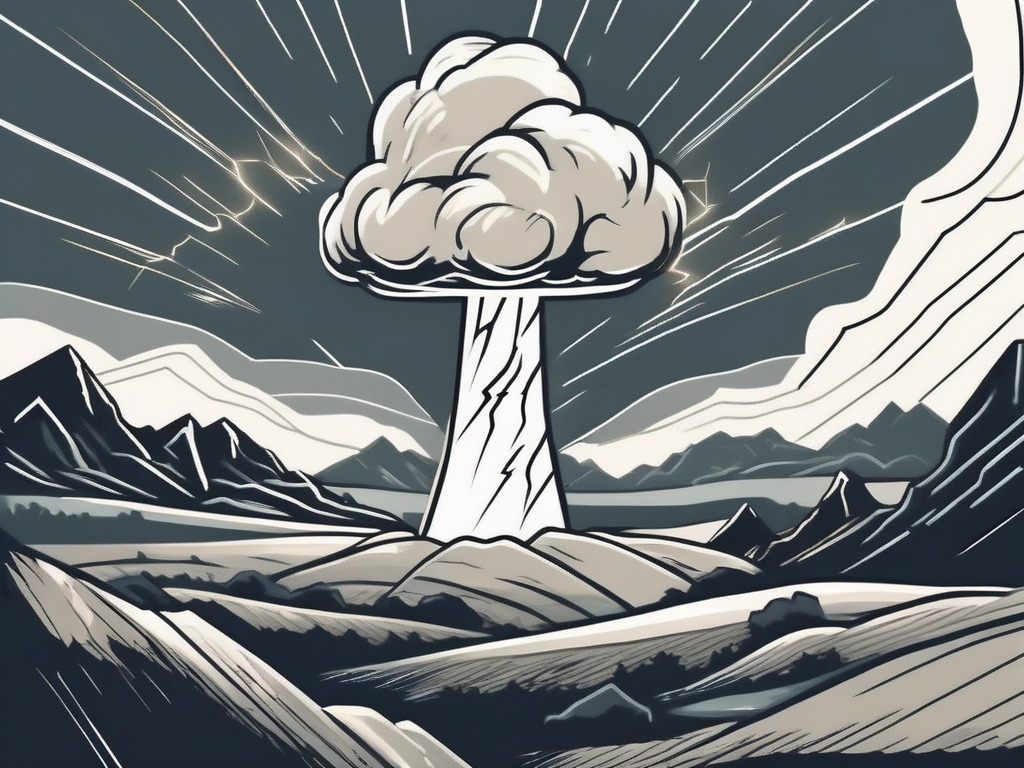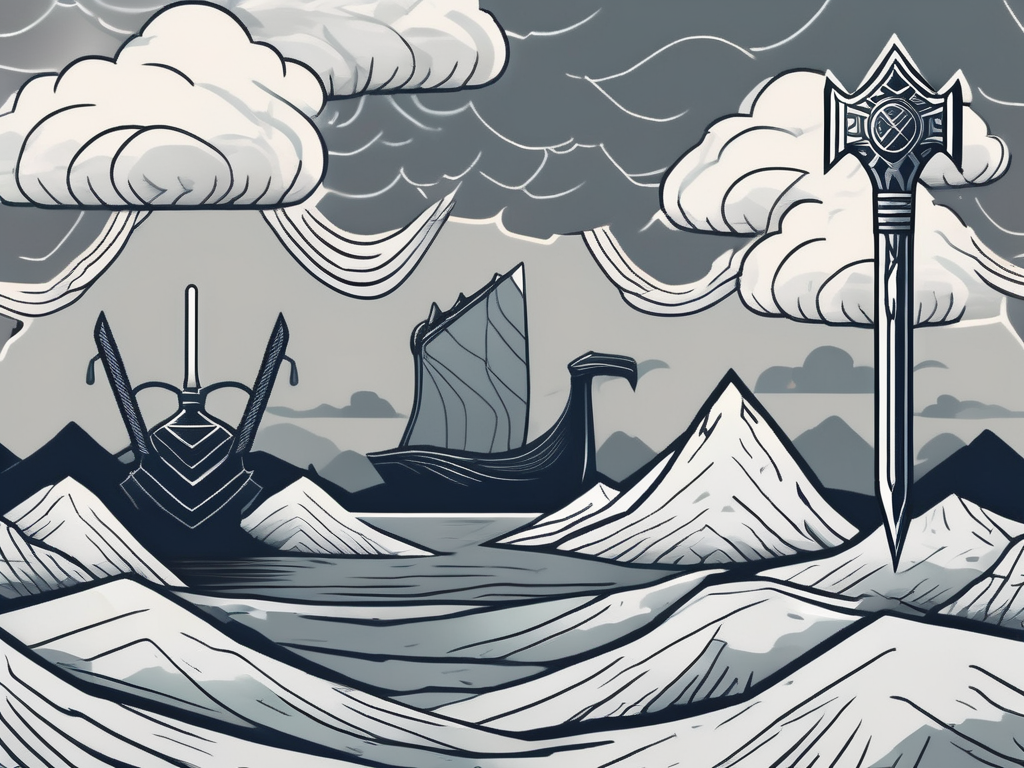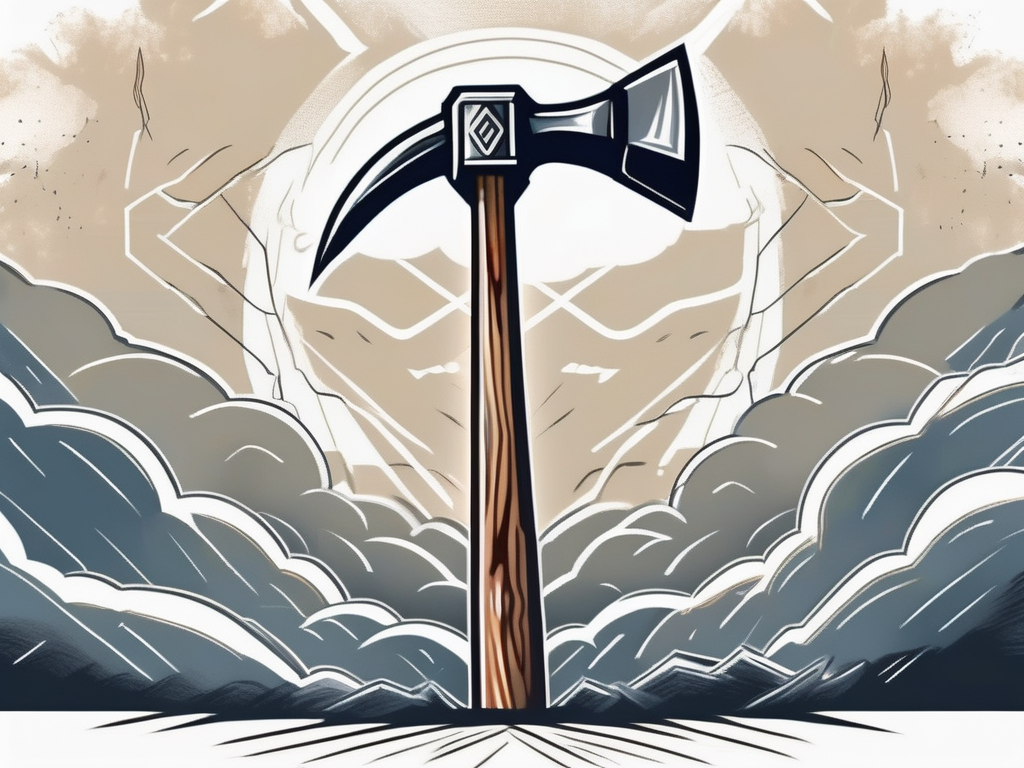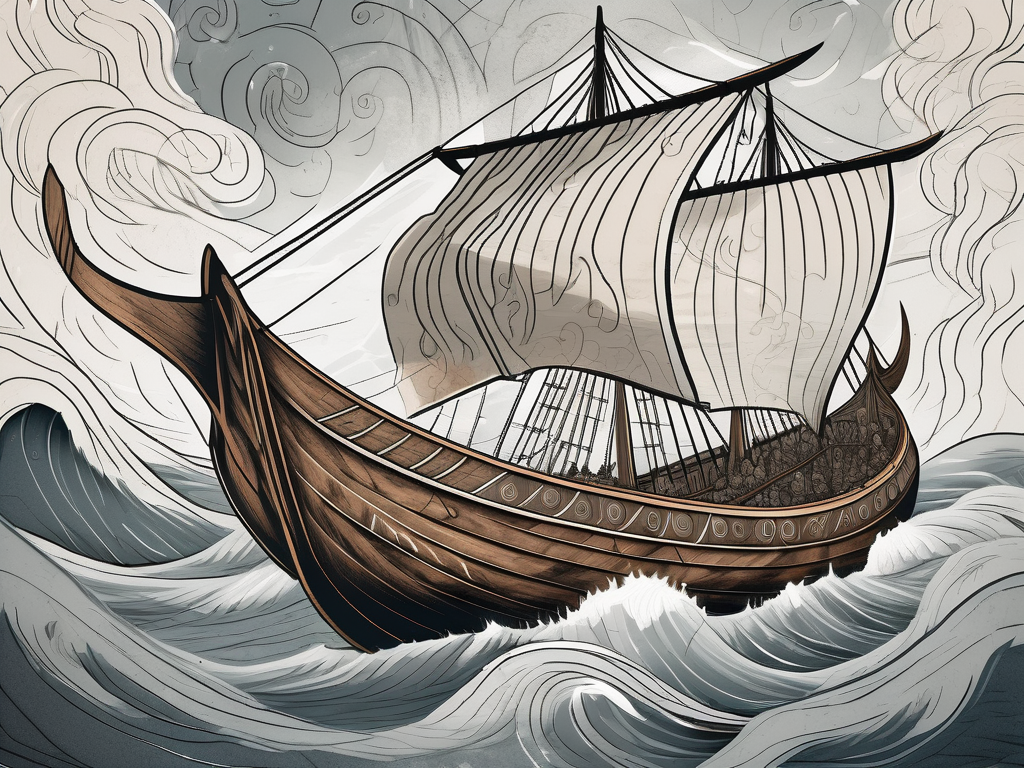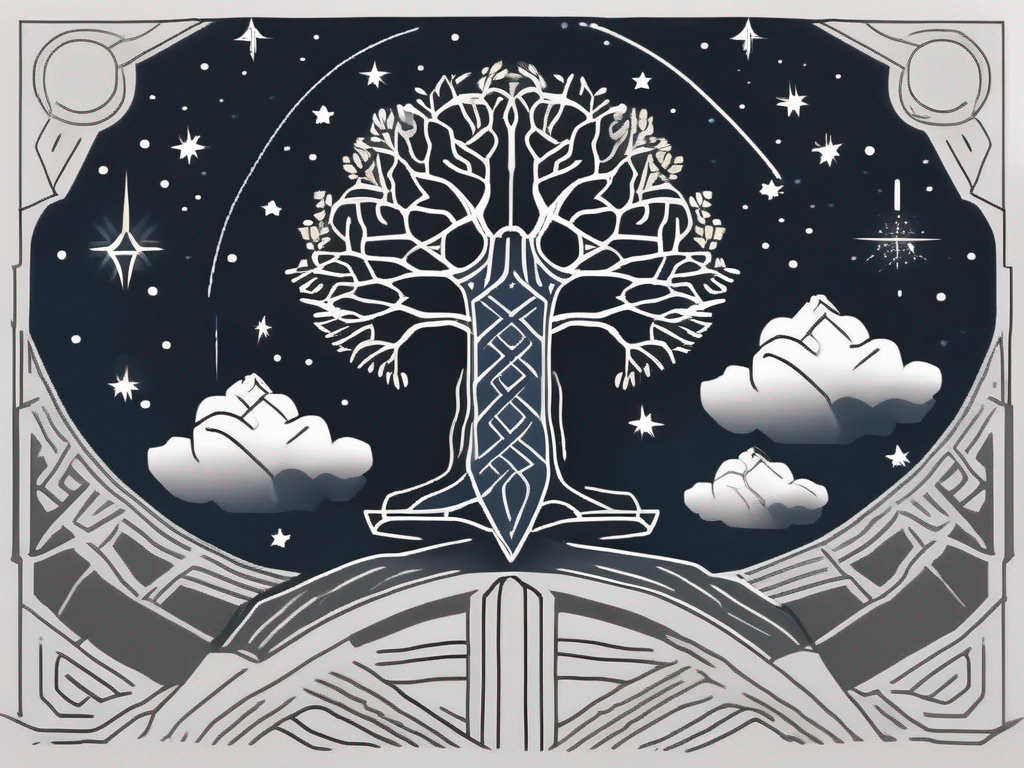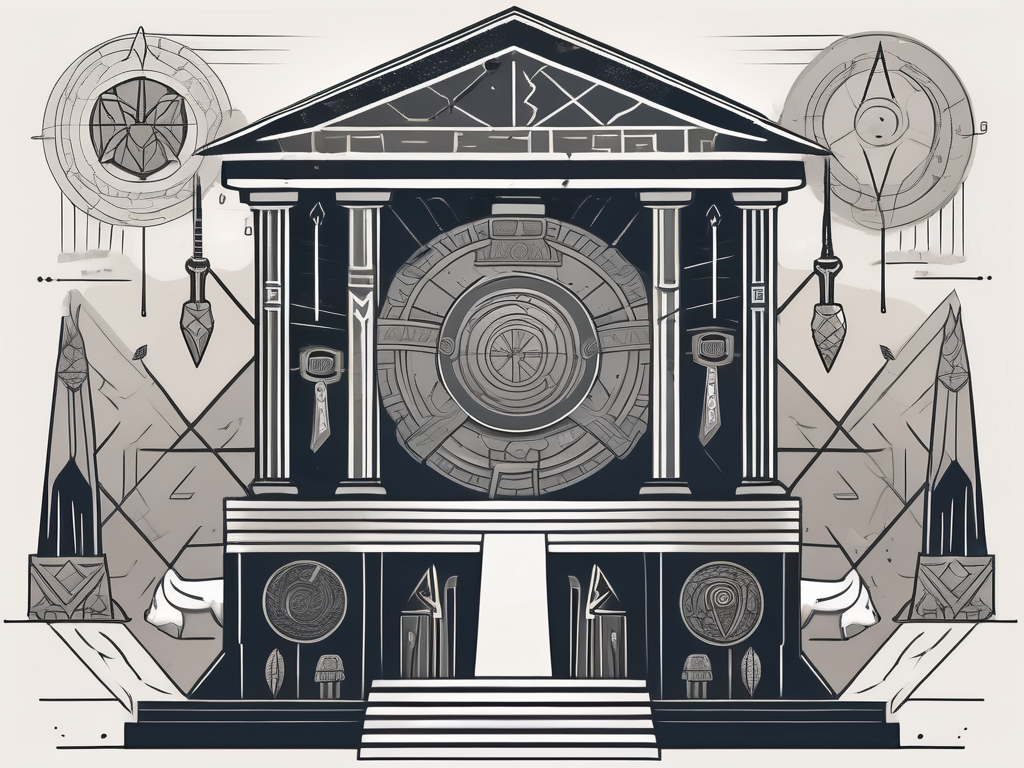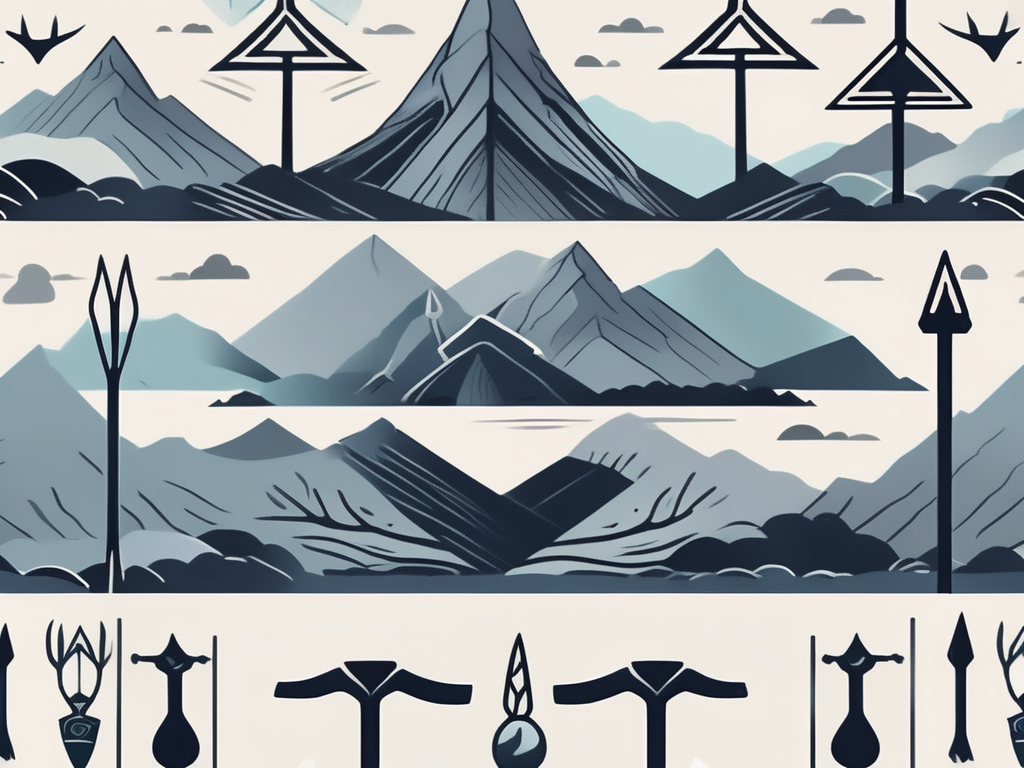Ah, Thor, the mighty Norse god of thunder. Known for his powerful hammer, Mjölnir, and his red beard, Thor is one of the most prominent figures in Norse mythology. But before we delve into the tales of his epic battles and incredible powers, let’s start by understanding the rich tapestry of Norse mythology itself.
Understanding Norse Mythology
Norse mythology is a vast and complex belief system that was an integral part of Viking society. It encompasses a pantheon of gods and goddesses, each with their unique attributes and responsibilities.
The Norse gods and goddesses were not just characters in stories; they were revered and worshipped by the Vikings. These deities represented different aspects of life and nature, and the Vikings believed that by honoring and appeasing them, they could gain their favor and protection.
The Pantheon of Norse Gods
In Norse mythology, there are numerous gods and goddesses who play significant roles in the ancient tales. Odin, the Allfather, is the king of the gods and the god of wisdom and war. He is often depicted as a wise old man, with a long white beard and a single eye, as he sacrificed his other eye for wisdom.
Freya, the goddess of love and beauty, is another prominent figure in Norse mythology. She is known for her enchanting beauty and her association with fertility and desire. Freya is often depicted wearing a cloak made of falcon feathers and riding a chariot pulled by two large cats.
And of course, there is Thor, the god of thunder and lightning. He is the son of Odin and the protector of both gods and humans. Thor wields the mighty hammer Mjolnir, which he uses to defend Asgard, the realm of the gods, from the forces of chaos and destruction.
The Role of Mythology in Viking Society
Norse mythology was not merely a collection of stories to entertain the Vikings. It played a crucial role in their society, shaping their worldview and providing moral and ethical guidance. These myths and legends were a way for the Vikings to understand the world around them and make sense of their place in the cosmos.
For the Vikings, mythology was a means of explaining natural phenomena such as thunderstorms, the changing seasons, and the cycle of life and death. They believed that the gods and goddesses controlled these forces and that by understanding their actions, they could better navigate the challenges of their daily lives.
Furthermore, Norse mythology provided the Vikings with a moral compass. The tales of gods and heroes taught them about honor, bravery, loyalty, and the consequences of their actions. Through these stories, the Vikings learned about the importance of community, the value of courage, and the need to uphold their oaths and promises.
Overall, Norse mythology was deeply intertwined with Viking society, influencing their art, literature, and even their legal system. It was a source of inspiration and guidance, connecting the Vikings to their ancestral roots and providing them with a sense of identity and purpose.
The Birth and Origins of Thor
Let’s dig deeper into the birth and origins of Thor. Born to Odin and Fjorgyn, Thor came from a lineage of powerful gods.
The Lineage of Thor
Thor is the son of Odin, the Allfather, and Fjorgyn, a primeval goddess associated with the earth. This divine lineage bestowed upon Thor immense power and strength.
Odin, the ruler of the gods in Norse mythology, was known for his wisdom and his role as the god of war, poetry, and magic. Fjorgyn, on the other hand, was a goddess closely connected to the earth and its fertility. Together, Odin and Fjorgyn created a powerful union that gave birth to Thor, a god of thunder and lightning.
Thor’s birth was not without its challenges. As the god of thunder, he was born with a tremendous amount of energy, causing storms and lightning to crackle across the sky. This display of power was a testament to his divine heritage and marked him as a force to be reckoned with.
From an early age, Thor exhibited great strength and bravery. As a child, he would often engage in playful battles with his fellow gods, testing his might against them. These early skirmishes served as a training ground for Thor, honing his skills and preparing him for the battles that lay ahead.
Thor’s Place in the Norse Creation Myth
In the Norse creation myth, Thor played a vital role. As a protector of both gods and humans, Thor’s battles against the giants were instrumental in establishing order in the cosmos.
According to the myth, the world was initially a chaotic and dangerous place, with giants wreaking havoc and threatening the existence of gods and humans alike. It was Thor’s duty to confront these giants and restore balance to the world.
With his mighty hammer, Mjolnir, Thor would engage in epic battles against the giants, using his thunderous power to strike fear into their hearts. His thunderous roars and lightning strikes would echo across the realms, announcing his presence and inspiring awe in those who witnessed his might.
Thor’s battles against the giants were not only physical but also symbolic. They represented the eternal struggle between order and chaos, with Thor serving as the embodiment of order and the giants representing chaos and destruction.
Through his unwavering determination and indomitable spirit, Thor emerged victorious in countless battles, earning the respect and admiration of both gods and humans. His bravery and heroism became legendary, and his name was spoken with reverence throughout the realms.
In conclusion, the birth and origins of Thor are steeped in divine lineage and mythical significance. Born to Odin and Fjorgyn, Thor inherited immense power and strength, making him a formidable god. His role as a protector and his battles against the giants played a crucial part in establishing order in the Norse cosmos. Thor’s story is a testament to the enduring power of myth and the timeless appeal of a hero who embodies strength, bravery, and the triumph of good over evil.
Thor’s Iconic Symbols and Their Meanings
No discussion of Thor can be complete without mentioning his iconic symbols, which are deeply rooted in Norse mythology and carry profound meanings.
Thor, the mighty god of thunder, is revered for his incredible strength and his ability to protect both gods and humans from the forces of chaos. His symbols serve as reminders of his power and the important role he plays in the Norse pantheon.
Mjölnir: Thor’s Mighty Hammer
Mjölnir, Thor’s mighty hammer, is perhaps the most recognizable symbol associated with him. Crafted by the skilled hands of the dwarves, this enchanted weapon allowed Thor to channel his incredible strength and summon thunder and lightning. The hammer’s name, Mjölnir, translates to “crusher” or “grinder,” emphasizing its destructive power.
Legend has it that Mjölnir was not only a weapon but also a tool of creation. When thrown, it would always return to Thor’s hand, symbolizing his unwavering dedication to protecting the realms. The hammer’s short handle was said to represent Thor’s preference for close combat, where his immense strength could be fully utilized.
Furthermore, Mjölnir served as a symbol of Thor’s authority and divine right to rule. It was often depicted in Norse artwork, adorning amulets and pendants worn by the faithful as a talisman of protection. The sight of Mjölnir struck fear into the hearts of Thor’s enemies, as they knew the devastating power it possessed.
Thor’s Chariot and Goats
In addition to Mjölnir, Thor is also closely associated with his chariot pulled by two magical goats, Tanngrisnir and Tanngnjóstr. These goats, with their supernatural strength and endurance, allowed Thor to travel swiftly across the realms of Norse mythology.
Tanngrisnir and Tanngnjóstr were not ordinary goats. They possessed the ability to be slaughtered and then brought back to life by Thor’s divine power. This unique characteristic symbolized the cycle of life and death, as well as Thor’s ability to restore balance and order in the face of chaos.
Thor’s chariot, drawn by these mighty goats, was a sight to behold. As Thor rode through the skies, the rumble of thunder echoed, and lightning crackled, signifying his presence and power. The chariot itself was a symbol of Thor’s mobility and his role as a protector, allowing him to swiftly respond to threats and defend the realms from the forces of evil.
Together, Mjölnir and Thor’s chariot with its magical goats represent the essence of Thor’s character and his role as the defender of gods and humans alike. These symbols embody his strength, authority, and unwavering dedication to maintaining order and protecting the realms from the chaos that lurks beyond.
Thor’s Powers and Abilities
Now, let’s explore Thor’s awe-inspiring powers and abilities that made him such a formidable force in the Norse pantheon.
Strength and Battle Prowess
Thor’s most renowned trait is his immense physical strength, rivalled only by his father Odin. With his hammer, Mjölnir, Thor was capable of smashing mountains, defeating giants, and protecting both gods and humans
Control Over Weather
Another extraordinary ability possessed by Thor was his control over the weather. By summoning thunderstorms and lightning, he could manifest his authority and strike fear into the hearts of both his enemies and the forces of nature.
Thor’s Major Myths and Legends
Thor’s heroic exploits are abundant in Norse mythology, showcasing his bravery, resilience, and insatiable appetite for adventure.
Thor’s Endless Battles with the Giants
The Giants, sworn enemies of the gods, posed a constant threat to the realms of Norse mythology. Thor, with his indomitable strength and thunderous hammer, engaged in countless battles against these colossal beings, ensuring the safety and order of the cosmos.
The Theft of Thor’s Hammer
One of the most famous stories involving Thor is the theft of his hammer, Mjölnir. Loki, the trickster god, played a role in this misfortune, leading Thor on a daring quest to retrieve his prized possession.
Thor, with his thunderous might and unwavering determination, continues to inspire us to this day. His tales remind us of the power of bravery, strength, and good in the face of adversity. So, the next time you hear a rumble of thunder, remember that it might just be the mighty Thor himself, traversing through the realms of Norse mythology.
